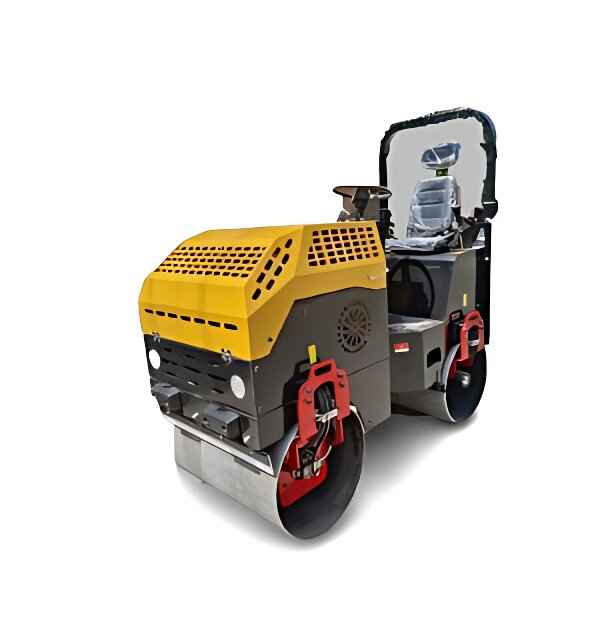Description
A ride-on roller is a larger construction machine used for compacting surfaces like soil, asphalt, or gravel. Unlike walk-behind rollers that are operated manually, ride-on rollers are designed for seated operation by a single operator.
Size and Capacity: Ride-on rollers are larger and heavier than walk-behind rollers, allowing them to cover more ground quickly and effectively.
Operator Comfort: They are equipped with a comfortable seat for the operator, along with controls that are easily accessible from the seated position.
Vibration Systems: Many ride-on rollers have vibration systems that help in compacting the material efficiently by reducing air voids.
Safety Features: Modern ride-on rollers are equipped with safety features such as rollover protection structures (ROPS) and seat belts to ensure operator safety.
Maintenance: Regular maintenance is crucial to keep ride-on rollers in optimal condition, ensuring reliable performance on job sites.
A ride-on roller is a heavy-duty compaction machine designed to deliver efficient and uniform compaction of soil, gravel, asphalt, and other base materials. Unlike walk-behind rollers, ride-on models allow the operator to sit or stand on the machine, providing greater control, comfort, and productivity—especially on large-scale construction projects.
🛠️ Types and Applications
Ride-on rollers come in various configurations to suit different job site requirements:
-
Single Drum Rollers: Ideal for compacting soil and sub-base layers. These rollers typically feature a smooth steel drum at the front and pneumatic tires at the rear, providing traction and maneuverability.
-
Double Drum (Tandem) Rollers: Equipped with two steel drums—one at the front and one at the rear—these rollers are perfect for asphalt compaction, ensuring a smooth and even surface.
-
Pneumatic Rollers: Utilize multiple rubber tires to achieve uniform pressure distribution, making them suitable for sealing asphalt layers and compacting granular materials.
These machines are commonly used in road construction, parking lot paving, and other infrastructure projects where consistent compaction is crucial.
⚙️ Technical Specifications
Ride-on rollers vary in size and power to accommodate different project scales:
-
Drum Width: Ranges from 700 mm to 2,100 mm, allowing for flexibility in coverage area.
-
Operating Weight: Can vary between 1,500 kg to over 16,000 kg, depending on the model and application.
-
Engine Power: Typically equipped with diesel engines ranging from 8 HP to over 160 HP, ensuring adequate power for various compaction tasks.
-
Vibration Frequency: High-frequency models operate around 70 Hz, enhancing compaction efficiency.
-
Gradeability: Advanced models offer gradeability up to 60%, enabling operation on steep inclines.
✅ Key Features and Benefits
-
Enhanced Productivity: Ride-on rollers cover larger areas more quickly than walk-behind models, reducing project timelines.
-
Operator Comfort: Features like ergonomic seating, intuitive controls, and vibration-dampening systems minimize operator fatigue during extended use.
-
Precision Compaction: Adjustable settings for vibration frequency and amplitude allow for tailored compaction based on material type and project requirements.
-
Durability: Constructed with robust materials and components to withstand harsh job site conditions and ensure long service life.
🏗️ Typical Applications
Ride-on rollers are versatile machines suitable for various applications:
-
Road Construction: Essential for compacting sub-base layers and asphalt surfaces to achieve a smooth, durable roadway.
-
Parking Lots and Driveways: Ensure a level and stable surface capable of withstanding vehicular traffic.
-
Landscaping Projects: Used to prepare the ground for lawns, gardens, and other landscaping features.
-
Airport Runways: Provide the necessary compaction for runways to handle the stress of aircraft landings and takeoffs.


 Brochure
Brochure Call Us
Call Us Whatsapp Now
Whatsapp Now